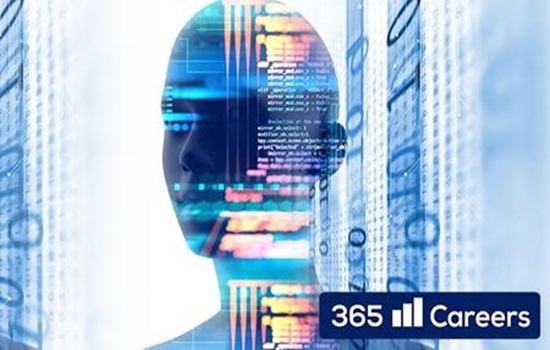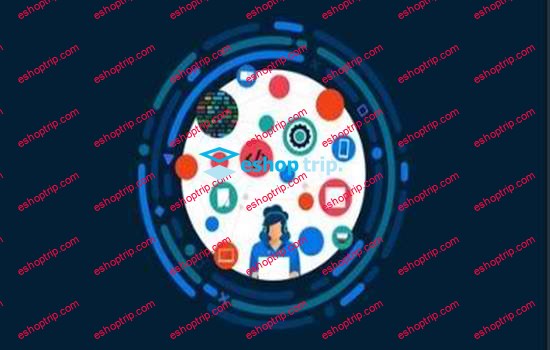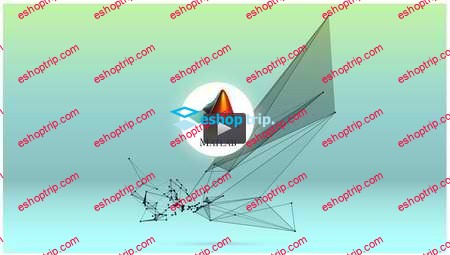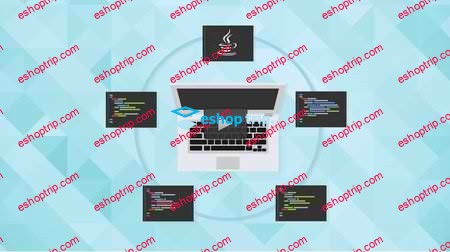Published 4/2024
MP4 | Video: h264, 1920×1080 | Audio: AAC, 44.1 KHz
Language: English | Size: 2.42 GB | Duration: 8h 21m
Power UP Your Data Analysis Skills with Chat GPT. Analyse Complex Datasets, Create Stunning Visualizations with Chat GPT
What you’ll learn
Conduct AI Driven Data Analysis Using ChatGPT
Visualize Data and Identify Unique Patterns in Data Using ChatGPT
Write and Manage Python Codes for Advanced Statistical Analysis Using ChatGPT
Prepare Professional Reports and APA Style Write-Ups Using ChatGPT
Improve Research Productivity Using ChatGPT
Requirements
A computer or a similar device with an internet connection and a ChatGPT account
Description
Course DescriptionDiscover the power of data analysis and artificial intelligence with this unique course AI Driven Data Analysis Using Chat GPT. This course is designed to equip you with the knowledge and skills to leverage ChatGPT, one of the most advanced AI models developed by OpenAI, for in-depth data analysis. Whether you are a beginner curious about AI and data science or a seasoned professional looking to enhance your skills, this course provides a structured path from fundamental concepts to advanced applications.Learning OutcomesBy the end of this course, you will be able to:Understand the essentials of ChatGPT and its significance in data analysis.Navigate through different versions of ChatGPT and select the appropriate one for your needs.Set up and use Jupyter Lab for executing ChatGPT-powered data analysis tasks.Master prompt engineering to optimize interactions with ChatGPT for specific outputs.Conduct comprehensive data screenings, manage missing values, and understand different imputation methods using ChatGPT.Perform advanced statistical analysis, including hypothesis testing, ANOVA, and regression analysis, facilitated by ChatGPT.Generate and interpret data visualizations and statistical reports in APA format using ChatGPT.Develop and validate data-driven hypotheses, leveraging the AI’s capabilities to enhance accuracy and insights.Pre-requisitesThis course is accessible to learners with varying levels of experience. However, the following are recommended to ensure a smooth learning journey:Basic understanding of data analysis and statistics.Familiarity with Python programming is beneficial but not mandatory.Access to a computer capable of running Anaconda and Jupyter Lab.Unique FeaturesHands-On Learning: Each module includes practical exercises and projects, allowing you to apply concepts in real-time using ChatGPT.Comprehensive Coverage: From setting up your environment to advanced data analysis techniques, the course covers every aspect in detail.Expert Support: Gain insights and feedback from industry experts specializing in AI and data science.Flexible Learning: Access the course content at any time, and learn at your own pace with lifetime access to all resources.Course Content OverviewIntroductory Modules: Begin with an introduction to ChatGPT, its importance, and detailed guides on setting up your account and tools like Anaconda and Jupyter Lab.Data Handling: Learn to import and manipulate data efficiently in Jupyter Lab using ChatGPT, covering a range of file types and data structures.Prompt Engineering: Dive deep into prompt engineering, learning to craft prompts that guide ChatGPT to produce optimal outputs for various data analysis tasks.Statistical Analysis: Engage with modules on statistical tests, understanding and applying different methods such as t-tests, ANOVA, and various forms of regression analysis using both theoretical knowledge and ChatGPT’s computational power.Advanced Data Management: Tackle complex scenarios in data management, including missing value analysis and understanding data distribution properties.Final Projects: Apply everything you’ve learned in comprehensive projects that challenge you to use ChatGPT for real-world data analysis scenarios.This course not only enhances your analytical skills but also prepares you to be at the forefront of AI-assisted data science, making you a valuable asset in any data-driven industry. Join us to transform data into insights and AI understanding into practical expertise.
Overview
Section 1: Introduction to Chat GPT
Lecture 1 What is ChatGPT and Why You Must Know About It ?
Lecture 2 Account Creation and Choosing Between Free and Paid Version of Chat GPT
Lecture 3 Downloading and Installing Anaconda and Running Jupyter Lab
Section 2: Working with Chat GPT and Jupyter Lab
Lecture 4 Learning to Import an Excel Data File in Jupyter Lab with ChatGPT Code
Lecture 5 Developing Familiarity with Jupyter Lab Note Book
Section 3: Prompt Engineering
Lecture 6 What is Prompt Engineering ?
Lecture 7 Ten Principles of Effective Prompt Engineering Part 1
Lecture 8 Understanding Temperature and Top-k Parameters
Lecture 9 Understanding Pivoting
Lecture 10 Depth Safety and Evaluation Principles of Prompt Engineering
Lecture 11 Prompt Engineering Example Asking ChatGPT to Suggest Right Statistical Test
Lecture 12 Prompt Engineering Example Using ChatGPT to Find an Impactful Research Idea
Lecture 13 How to Use ChatGPT to Generate a Simulated Dataset for Factor Analsyis
Lecture 14 Using ChatGPT for Manual Calculation of Factor Loadings
Lecture 15 How to Use ChatGPT to Generate APA Style Tables
Lecture 16 Using ChatGPT to generate APA style Write Up
Lecture 17 Using ChatGPT to create a List of Major Statistical Test with Formula
Section 4: Data Screening and Descriptive and Analysis in Chat GPT
Lecture 18 Data Screening Using ChatGPT
Lecture 19 Missing Value Analysis Methods Naive vs Imputation Methods
Lecture 20 Understanding Listwise vs. Pairwise Deletion
Lecture 21 Missing Value Analysis Imputation Methods
Lecture 22 Missing Value Analysis Using ChatGPT Plus
Lecture 23 Missing Value Analysis Using ChatGPT
Lecture 24 Understanding Skewness
Lecture 25 Calculating Skewness in ChatGPT Numerical and Visual Method
Lecture 26 Calculating Pearson Bowley and Kelly’s Coefficients of Skewness Using Chat GPT +
Lecture 27 Calculating Coefficients of Skewness in ChatGPT
Lecture 28 Understanding Normality, Normal Distribution and Standard Normal Distribution
Lecture 29 Historical Origin of Normal Distribution Gauss vs Laplace’s Contribution
Lecture 30 Properties of Normal Distribution
Lecture 31 Understanding Kolmogorov-Smirnov Test and Shapiro-Wilk Test
Lecture 32 Perfomaity Normality Analysis in ChatGPT Plus and Reporting Result in APA format
Lecture 33 Normality Test Using ChatGPT and Jupyter Lab
Section 5: Data Analysis Plan Using ChatGPT
Lecture 34 Introduction to Data Analaysis Steps
Lecture 35 Role of Setting in Data Analysis Process
Lecture 36 Steps Involved in Research Data Analysis From Raw
Lecture 37 Understanding Differences Between Models vs. Theories
Section 6: Descriptive Statistics Using ChatGPT
Lecture 38 Descriptive Statistics Using ChatGPT
Lecture 39 Understanidng Descriptive Statistics
Lecture 40 Types of Measures of Central Tendency
Lecture 41 Understanding Arithmetic Mean
Lecture 42 Calculation of Arithmetic Mean using ChatGPT Plus
Section 7: Analysis of Group Differences Using ChatGPT
Lecture 43 Introduction to Analysis of Group Differences
Lecture 44 Types of Group Difference tests
Lecture 45 Assumptions of Parametric Tests
Lecture 46 Understanding Statistical Formula of t-test
Lecture 47 Understanding Data and Formulating Hypothesis
Lecture 48 Calculation of t-test in ChatGPT Plus
Lecture 49 Calculation of t-test using Chat GPT and Python
Lecture 50 Paired Sample t-test Introduction and Formula
Lecture 51 Understanding Data and Hypothesis Development for
Lecture 52 Paired Sample t-Test in GPT Plus
Lecture 53 Paired Sample t-test using CHatGPT and Python
Lecture 54 Introduction to One-Way Anova
Lecture 55 Theory and Calculation of One Way Anova
Lecture 56 Understading Data and Developing Hypothesis
Lecture 57 Conducting ANOVA Using ChatGPT Plus
Lecture 58 Conducting ANOVA using ChatGPT and Python
Section 8: Corrletaional Analysis Using ChatGPT
Lecture 59 A Self-Introduction to Correlations
Lecture 60 Calculation of Correlation Coefficient Using ChatGPT
Lecture 61 Calculating Pearson Correlation using ChatGPT and P
Section 9: Regression Analysis Using ChatGPT
Lecture 62 Introduction of Regression Analysis Using ChatGPT
Lecture 63 Types of Regression Linear Multiple Logistic
Lecture 64 Types of Regression Polynomial Ridge and Lasso Reg
Lecture 65 Types of Regression Elastic Net Quantile and Poisson
Lecture 66 Assumptions of Linear Regression
Lecture 67 Understanding Data and Formulating Hypothesis of Multiple Regression
Lecture 68 Regression Analysis Using ChatGPT Plus
Lecture 69 Regression Analysis Using GPT 3.5 and Python
This course is intended for working professionals looking to improve their productivity for research and data analysis.,It can also be useful for anyone looking to harness the power of AI for data analysis.
Homepage
https://anonymz.com/?https://www.udemy.com/course/data-analysis-using-chat-gpt/










